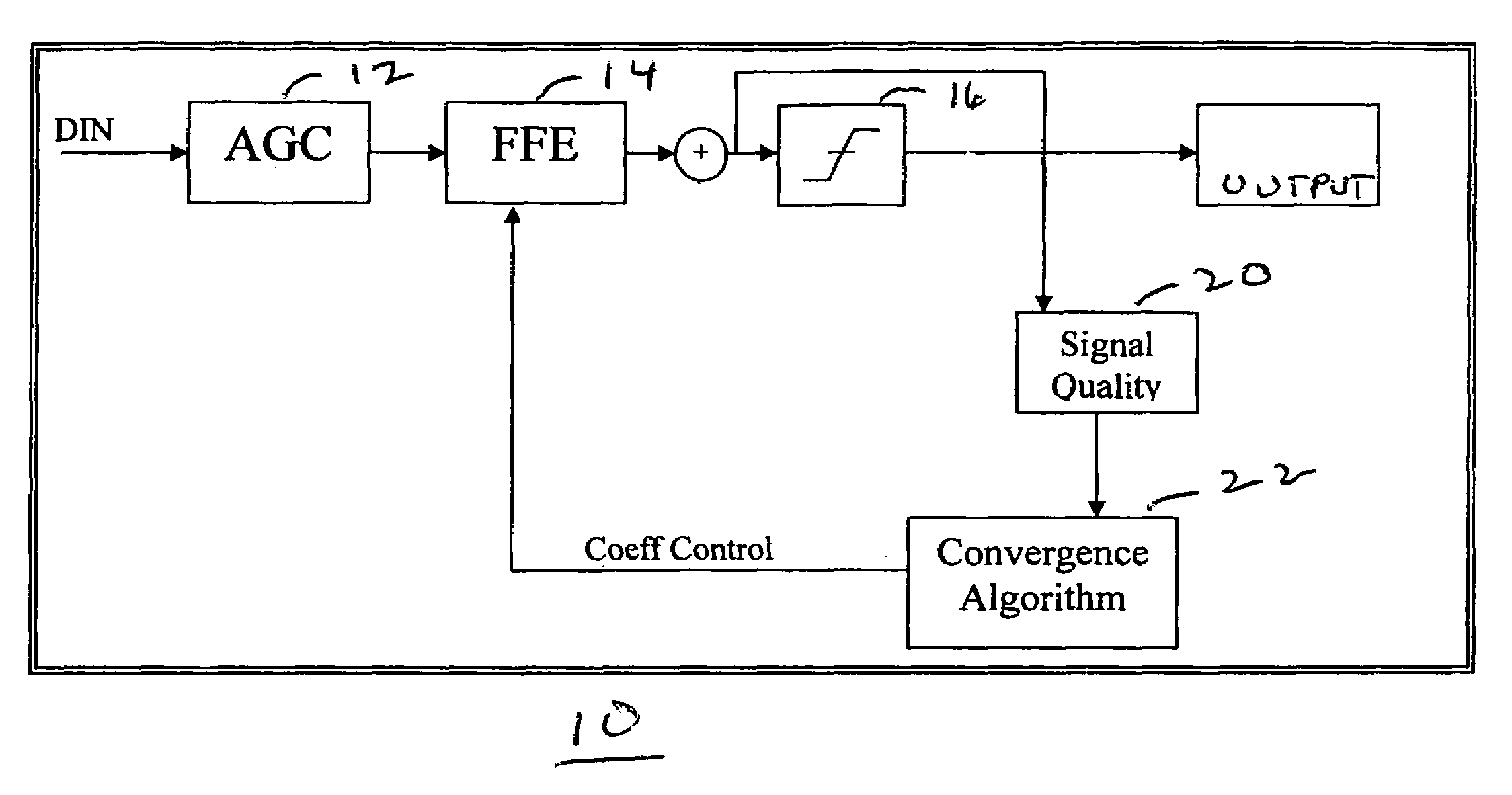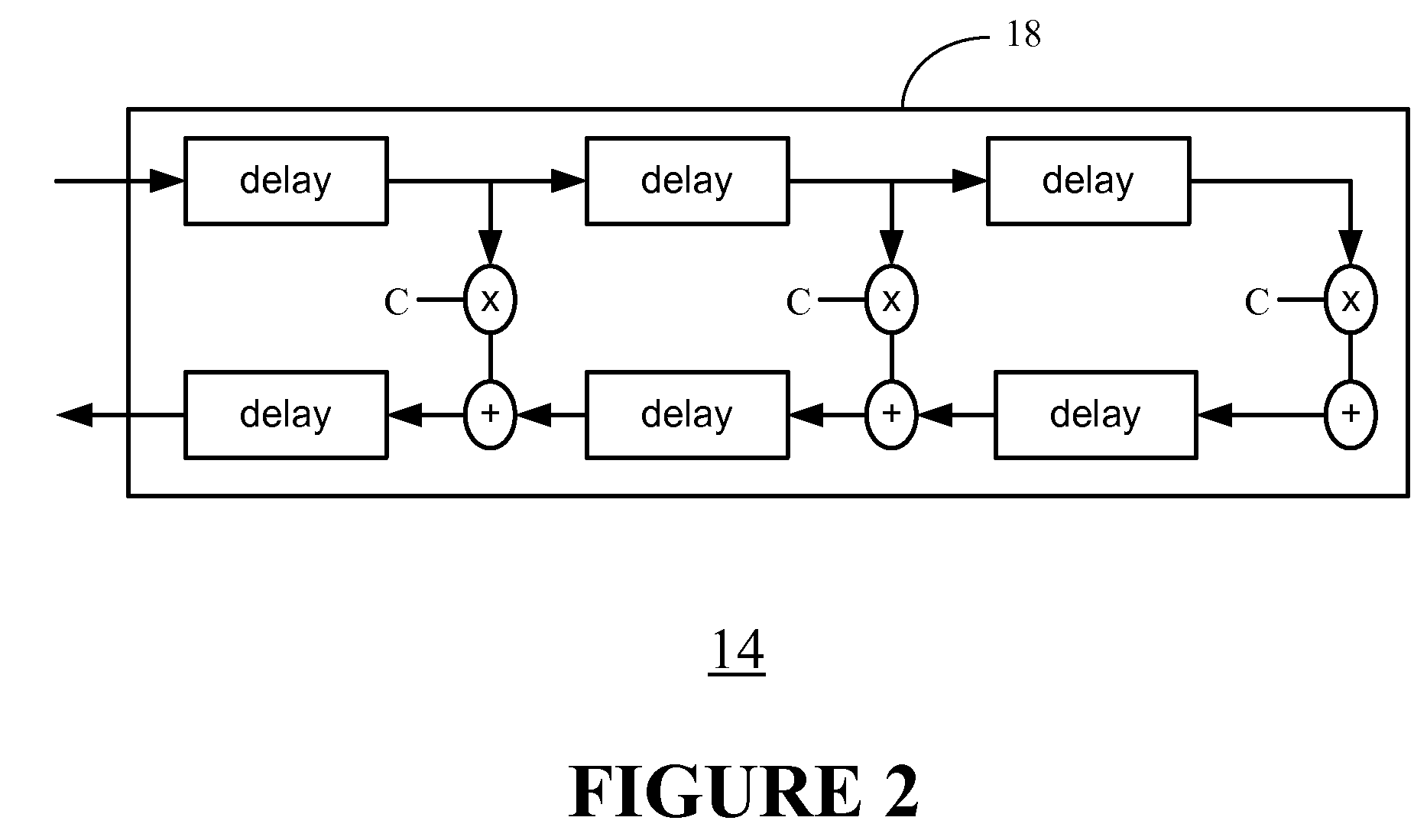Adaptive clock-less equalizer circuit
a clockless equalizer and circuit technology, applied in the field of equalization of signals in circuits, can solve problems such as fiber length, and achieve the effect of easing the scaling of equalizers and increasing speeds
- Summary
- Abstract
- Description
- Claims
- Application Information
AI Technical Summary
Benefits of technology
Problems solved by technology
Method used
Image
Examples
Embodiment Construction
[0010]The present invention relates generally to equalization of signals in a circuit. The following description is presented to enable one of ordinary skill in the art to make and use the invention and is provided in the context of a patent application and its requirements. Various modifications to the preferred embodiment and the generic principles and features described herein will be readily apparent to those skilled in the art. Thus, the present invention is not intended to be limited to the embodiment shown but is to be accorded the widest scope consistent with the principles and features described herein.
[0011]FIG. 1 is a top level diagram of an adaptive equalizer 10 in accordance with the present invention. Din is the data input of the equalizer 10. The data is provided to an Analog Gain Control (AGC) 12, so that any DC loss can be adjusted and proper signal amplitude obtained. Next, the signal is fed into a Feed Forward Equalizer (FFE) 14 (per description in U.S. patent app...
PUM
 Login to View More
Login to View More Abstract
Description
Claims
Application Information
 Login to View More
Login to View More - R&D
- Intellectual Property
- Life Sciences
- Materials
- Tech Scout
- Unparalleled Data Quality
- Higher Quality Content
- 60% Fewer Hallucinations
Browse by: Latest US Patents, China's latest patents, Technical Efficacy Thesaurus, Application Domain, Technology Topic, Popular Technical Reports.
© 2025 PatSnap. All rights reserved.Legal|Privacy policy|Modern Slavery Act Transparency Statement|Sitemap|About US| Contact US: help@patsnap.com



